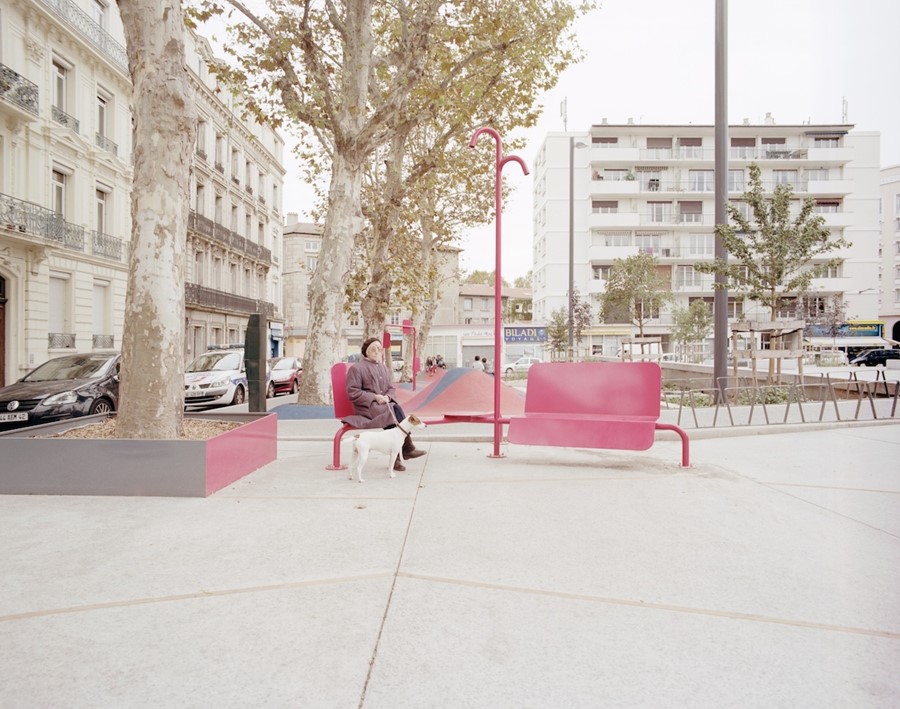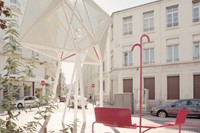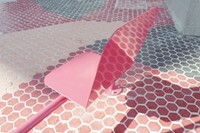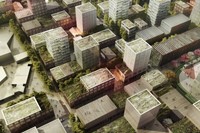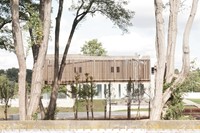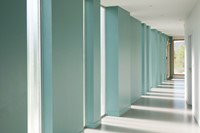The celebrated architect and founder of AWP Paris on redefining the landscape of Paris and the eternal beauty of impermanence
An “urban living room” – a room for dancing, a room for playing, a room for resting. A depuration plant on the Seine river front. A giant wooden canopy in Norway. Alessandra Cianchetta is an award-winning architect and a founding partner of the celebrated AWP Paris, a collective devoted to exploring new and challenging discourses between design and the natural environment. She is currently working on two projects staggering in ambition and scope – one is an 85,000 square-metre housing and mixed-use sector project in Lausanne, which will eventually transform the cityscape (the project will take several years until completion) and a public space in Paris (taking into its sway 70,000 square metre) for the Jardins de l'Arche below the Grande Arche de la Défense, which will include a unique series of cultural and leisure buildings, and a number of public buildings and follies set in a park in Poissy.
Harbouring a desire as a young creative to work in the fashion sphere, Cianchetta has a unique approach to her discipline and an enduring obsession with what she describes as “impermanence” and the intangible forces of the natural world. Suffice it to say, her work has been presented all over the world at the likes of Cité de l'Architecture, Paris, the Museum of Modern Art, New York, and Maxxi, Rome. Here, the creative mastermind awarded the French Ministry of Culture Prize for Best Young Architect, who has published a number of books on our relationship to architecture and landscape, talks exclusively to AnOther about what drives her passion for transformation, and tells us why destruction is sexy.
What first drew you to architecture and design?
I came to architecture by chance. I initially wanted to work in fashion, and I have lots of friends in that world, but I was at a fashion design function when I was younger and Emilio Pucci persuaded me to become an architect – he said it was a less superficial industry. I [followed his advice and] went into architecture with very big frustrations about fashion, because, to be honest, I didn’t know exactly what I wanted to be. I first became very interested in landscaping because in landscaping there is something that is impermanent and ever changing and I am fascinated with impermanence, with unstable, uncontrollable environments, with the idea of space as a scene. I started out doing things that were kind of between art, installation, and proper architecture – from that point we started winning competitions for more permanent buildings and master plans.
However, I never considered fashion as superficial as it so strongly modifies our perception and experience of the world. In a similar way buildings, as a background to all human action, also have a huge influence. In a way, these are very related – they both mediate and influence our relationship to the world.
"I am fascinated with impermanence, with unstable, uncontrollable environments, with the idea of space as a scene" — Alessandra Cianchetta
Tell us about the projects you are currently working on…
Well, I’ve become very interested in big scale projects, with a recurrent interest in evolving environments: from landscapes to cityscapes and, more recently, also buildings, because buildings seem more constant and do not appear to change so much, though they also have a capacity to evolve, change, fluctuate… I am fascinated when buildings age, become ruins, or are destroyed, because some of them get so much sexier. I am interested in the soft performance of architecture – in smoothing physical reality with other subtler aspects of culture such as art, cinema or fashion, and, in the experiential, atmospheric qualities of a space at large.
I am currently working on both buildings and strategies, articulating many scales, which is challenging, but rather fascinating – one is the strategic planning for all the public spaces in Paris’ CBD, which will take about 20 years, and is more of a strategic vision at the moment. The other project is one big, multi-layered public space of about 70,000 square metres – on one side it looks to the Seine and the historic core of the city and on the other it looks to metropolitan Paris. Since the Renaissance, all the kings and emperors of France and later, its presidents, have put landmarks in this same (historic) axis – the idea of the project is to link the two disjointed parts of Paris in a sort of urban couture. Both projects address physically and intellectually the question of the underground strata of the city, of what you do not normally see but is there.
How does it make you feel to work on such a huge project?
Doing something like this, designing at the scale of a city, gives you a sense of omnipotence; it is very exciting but at the same time it can change and become very political. On one hand, you have this sense of omnipotence and control – something architects generally like to toy with - but on the other hand nothing is really controlled because there are so many parameters. Unlike with a collection in fashion, it can take 10 years to have a fixed plan in place and all the permissions, but there’s an evolution in the process that I enjoy.
Do the disciplines of fashion and architecture overlap for you?
Themes from fashion, such as impermanence, only apply to some architecture, but most don’t – at least directly – because it tends to be so fixed and controlled and mostly because production times and paces are very different. I know and admire lots of fashion designers but my architecture is not directly influenced by fashion – at the office we have creative workshops and in these there are links to fashion, and I’d love to have some stimulating collaborations, but apart from that I wouldn’t say there are any obvious links, except the ambition to create extraordinary environments.
Text by John Paul Pryor
